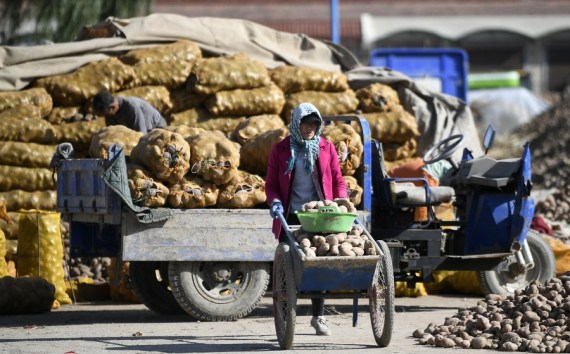Our Terms & Conditions | Our Privacy Policy
Special Report – Eradicating extreme poverty
“China’s battle against poverty has benefited the largest number of people in human history.”
Macau Business | October 2024 | Special Report | PRC at 75: China’s contributions to the world
China takes pride in its success in eradicating extreme poverty, arguably the greatest contribution the PRC has made to the world: transforming its GDP from CN¥67.9 billion in 1952 to CN¥126.06 trillion (about US$17.89 trillion) today.
At the founding of the People’s Republic of China in 1949, a large portion of the population lived in dire conditions. Statistics show that the annual per capita income was less than CN¥100. By 2023, this figure had risen to CN¥39,218, though significant disparities remain between rural and urban areas.
Over the past decade, annual per capita disposable incomes have improved across both urban and rural areas, reaching CN¥51,821 in urban regions and CN¥21,691 in rural ones by 2023.

“While there remains a significant income gap between urban and rural areas, it’s worth noting that the disparity, measured by the urban-rural income ratio, has been decreasing since 2013. In 2023, the ratio stood at 2.38,” according to a report from the United Nations Development Programme.
By the World Bank’s standards, “China has made a leap from a low-income to a middle-income country. Such progress can be seen as a tremendous achievement for China, considering its weak economic foundation and large population,” an official statement highlighted.
Since the reform and opening-up policies began, China has lifted 770 million rural citizens out of poverty, accounting for more than 70 per cent of the global total. Additionally, China has met the goal of eradicating poverty set in the UN’s 2030 Agenda for Sustainable Development 10 years ahead of schedule.
In 2019, the average life expectancy of the Chinese population rose to 77.3 years, up from just 35 years at the founding of the PRC.
“Over the past 40 years, the number of people in China with incomes below $1.90 per day – the international poverty line as defined by the World Bank to track global extreme poverty – has fallen by nearly 800 million. China’s contribution represents almost three-quarters of the global reduction in the number of people living in extreme poverty,” the World Bank reported in 2022.
“China has done a good job in all its Five-Year Plans to tackle poverty, address regional inequality, provide subsidies to the poor and needy, and care for the rural poor and urban slums. This aspect of poverty alleviation is arguably China’s greatest achievement since the mid-1970s.” – Sonny Lo
China’s approach to poverty reduction is based on two key pillars, according to the joint study Four Decades of Poverty Reduction in China: Drivers, Insights for the World, and the Way Ahead, conducted by the PRC and the World Bank. The first pillar was broad-based economic transformation, opening new economic opportunities and raising average incomes. The second was the recognition that targeted support was needed to alleviate persistent poverty, initially focusing on regions disadvantaged by geography and lack of opportunities, and later on specific households. The report emphasises several lessons from China’s experience that could benefit other countries, including the importance of prioritising education, fostering an outward economic orientation, maintaining sustained public investment in infrastructure, and adopting policies that encourage competition.
 Farmers load potatoes at a potato trading center in Xiji County, Guyuan, northwest China’s Ningxia Hui Autonomous Region, Oct. 21, 2020. (Xinhua/Wang Peng)
Farmers load potatoes at a potato trading center in Xiji County, Guyuan, northwest China’s Ningxia Hui Autonomous Region, Oct. 21, 2020. (Xinhua/Wang Peng)
“China’s battle against poverty has benefited the largest number of people in human history,” said Ma Jiantang, Secretary of the Party Leadership Group of the Development Research Centre of the State Council.
“China’s poverty reduction story is one of persistent growth through economic transformation,” said Manuela V. Ferro, World Bank Vice President for East Asia and the Pacific.
What is extreme poverty? At the beginning of the PRC, the expenditure on food and clothing among urban households accounted for 80 per cent of total living costs, while in rural areas, this figure was even higher, exceeding 90 per cent. In 1957, the per capita consumption expenditure of urban residents was CN¥222, of which CN¥130 was spent on food and CN¥27 on clothing.
The numbers
The annual per-capita income was less than CN¥100 Yuan in 1949. In 2023, the per-capita net income reached CN¥39,218
Images are for reference only.Images and contents gathered automatic from google or 3rd party sources.All rights on the images and contents are with their legal original owners.



Comments are closed.